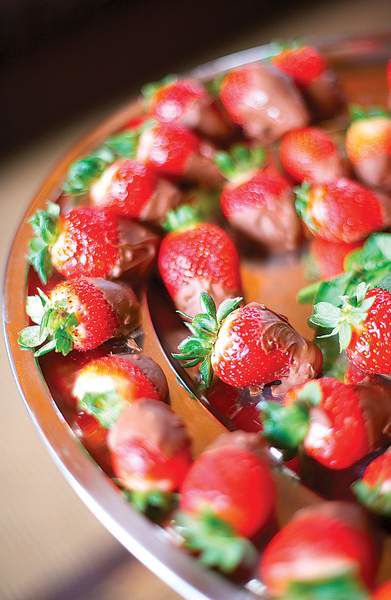A couple of tricks, tips to coating strawberries
Published 4:00 am Tuesday, February 8, 2011

- Use any high-quality chocolate for coating strawberries. Dark chocolate will provide a more intense flavor to contrast with the sweet berries. Just remember, the fewer ingredients the better the chocolate, in general.
Q: What chocolate should I use to make chocolate-covered strawberries, and how should I store them?
A: High-quality milk and white chocolates are excellent choices. And if you like more intense flavor, dark or bittersweet kinds provide a welcome contrast to the strawberries. Wash and dry the berries before coating them in melted chocolate, because even a drop of water can cause clumps to form. Once dipped, lay the coated fruits on parchment, and refrigerate them in an airtight container for up to two days.
Trending
If the confections won’t be eaten right away, you may want to temper the chocolate to prevent blooming — white spots that sometimes appear, over time, on the surface. Bloomed chocolate is edible, but it is not as visually appealing. Chocolate that contains additives or fats other than cocoa butter may not temper properly. In general, the fewer ingredients the chocolate has, the better.
For detailed tempering instructions, go to marthastewart .com/tempering.
Q: I want to start a vegetable garden from seed. How should I do it?
A: Consider where you live and what vegetables you want to grow. If you live in a region with a cold climate, you’ll need to plan around the first and last frosts. Check the seed packet for sowing information. Tomatoes, for example, need six to eight weeks of indoor growth before being transplanted outside; count backward from the last spring frost to determine when to sow. (In the U.S., frost dates are available from cooperative extension offices. To find one near you, go to csrees .usda.gov/Extension.)
But not all seeds should be started inside. Some root vegetables, including carrots and beets, do not take well to transplantation. Many leafy greens, such as spinach, grow quickly and should be planted outside.
When it’s time to sow, gather pots and a sterile potting or seedling mix (available at garden centers). Plant the seeds, and water with a fine spray. Water whenever the soil is dry to the touch. Or set the pots in a basin of water to moisten the soil; then remove them, letting the soil drain thoroughly.
Trending
A windowsill may seem like an ideal place for growing seeds, but it doesn’t provide sufficient light. Instead, put the pots where you have space to hang a shop light overheard. Mount it to the ceiling using adjustable chains, and equip it with one cool fluorescent tube and one warm fluorescent tube; these will provide the full spectrum of light that plants need. Set the fixture to hover an inch or two above the pots, and raise it as the seedlings grow.
Q: I have lush Montauk daisies in East Hampton, N.Y. When should I prune them so that they’ll bloom in summer? Last year, I pruned them in fall.
A: The Montauk daisy is a beautiful, sturdy and bushy white flower with a yellow center. It performs best when it’s cut back almost to the ground in spring. From now on, leave them in the garden after they bloom. But I understand: You were just trying to clean up the garden.








